
100 Bay Street
Sausalito, CA, US, 94965
Tel:415-331-6200
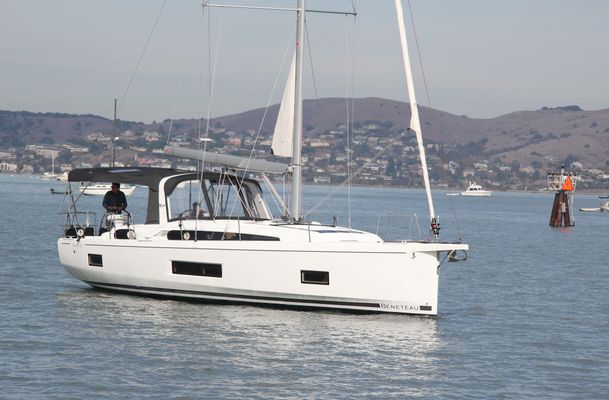
2020 Beneteau Oceanis 46.1
The Oceanis 46 offers all the features of a large cruising yacht, yet is manageable as a day sailer and an unbeatable entertainment platform at dock--the design delivers a great combination of performance, practicality and elegance.
The hull design is based on a Finot-Conq plan and has has a distinctive stepped hull that, in addition to impressive sailing performance and seakeeping ability, offers an incredible amount of space below (almost 6'6 of headroom!). The design also makes optimal use of the cockpit beam (and note the transom folds down to become a "beach club", tres chic!), making her safe and fun to sail with all the space above and below working a trick at the dock.
This particular well equipped and professionally maintained example (hull # 30 in the series) has barely 80 hours clocked on the upgraded 80 hp Yanmar diesel, and literally shows as a new boat. As well as being fully optioned from the factory (Downwind Pack, both Coastal and Offshore Electronic Packs, Tender Pack, bow thruster [works great], diesel heating system [works GREAT!]), All Day Night has had a custom dodger with full bimini cover (about $7,000), custom interior floor coverings (another $5,000), and an electric motor powered Zodiac dingy (about $4,000 more) all added by the owner (who also had all the running rigging replaced because he wasn't impressed with the OEM lines). Note this is the three stateroom, deep keel version, she's very competitively priced and is one of only a couple 46.1s available anywhere on the west coast.
Perhaps as important as all of the above is that she's lying in a potentially transferable downtown Sausalito Yacht Harbor slip--there's a LONG wait to get a slip of ANY size in the marina here let alone a 50 footer so this is a material benefit for someone able to take advantage.
She's also very competitively priced by a realistic owner and should be considered a must see for anyone in the market for a well found late model sailboat.
Specifications
Engine 1 Specifications
Media Gallery
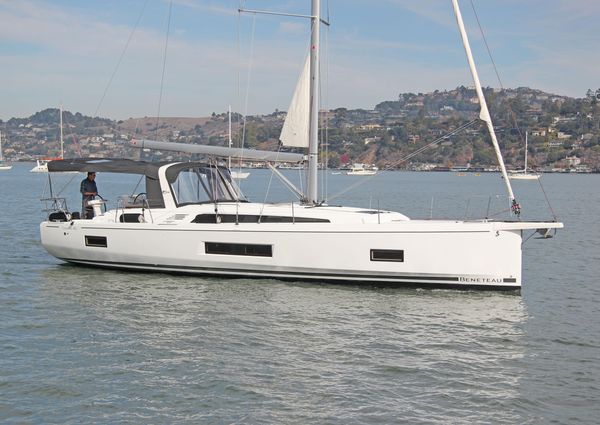 |
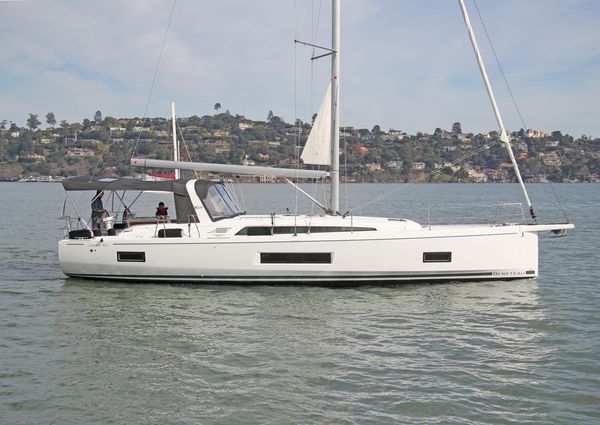 |
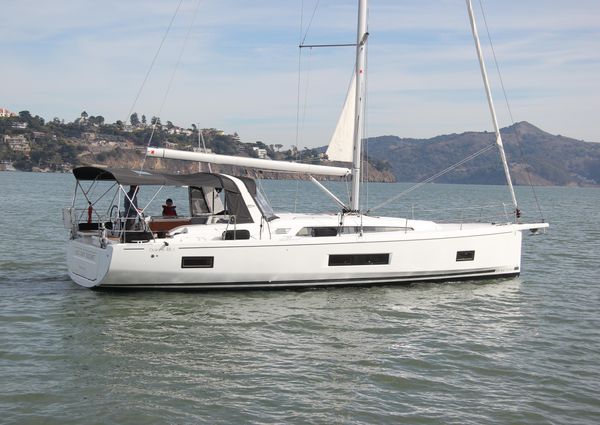 |
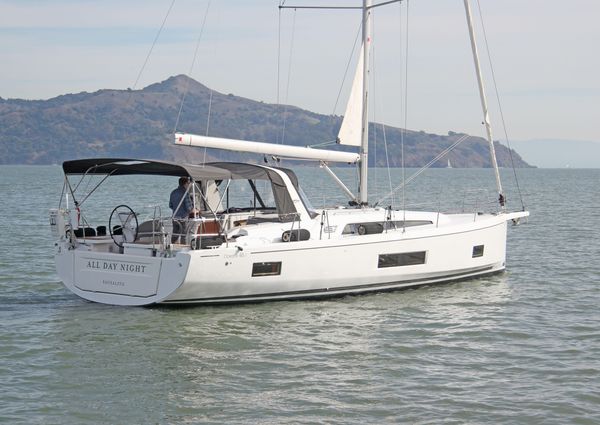 |
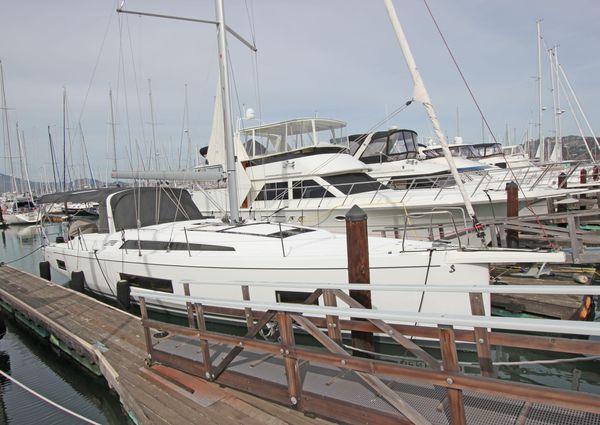 |
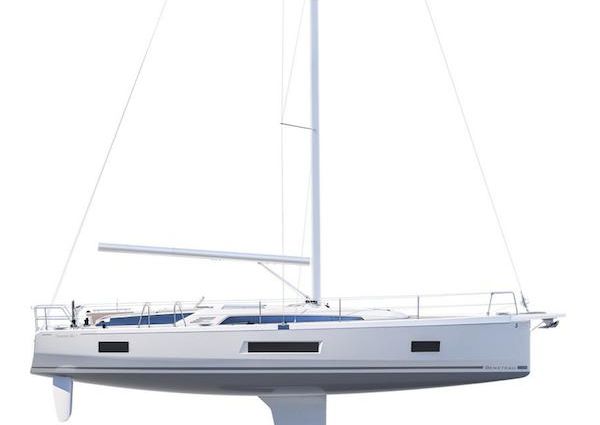 |
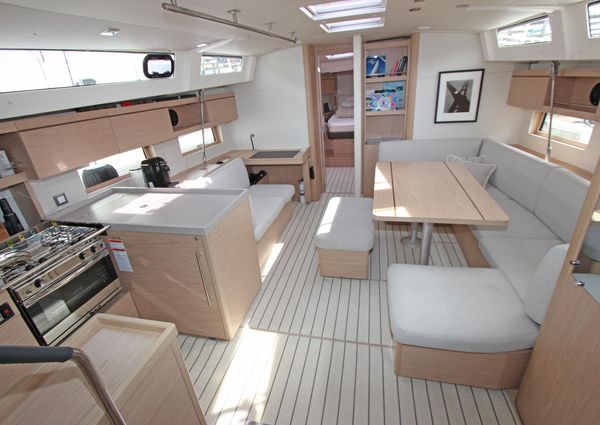 |
 |
 |
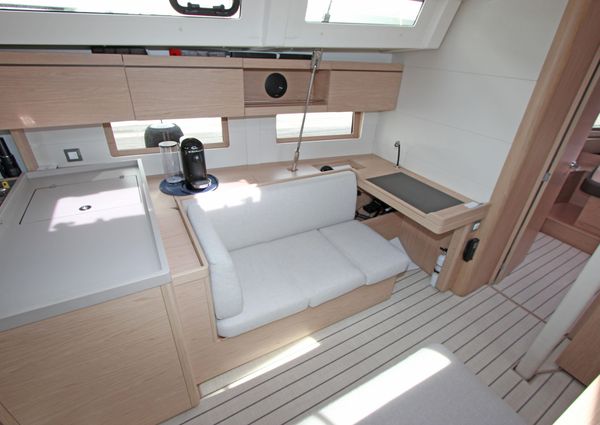 |
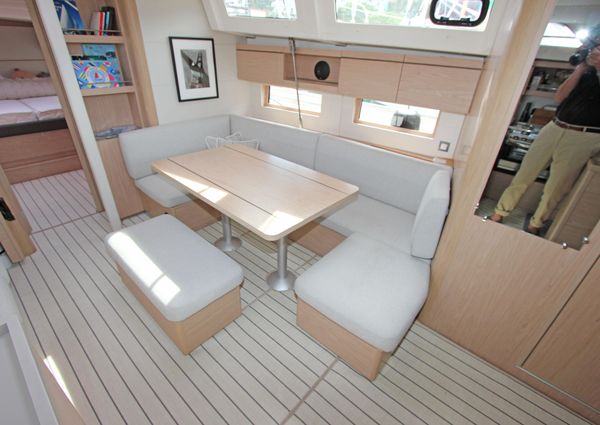 |
 |
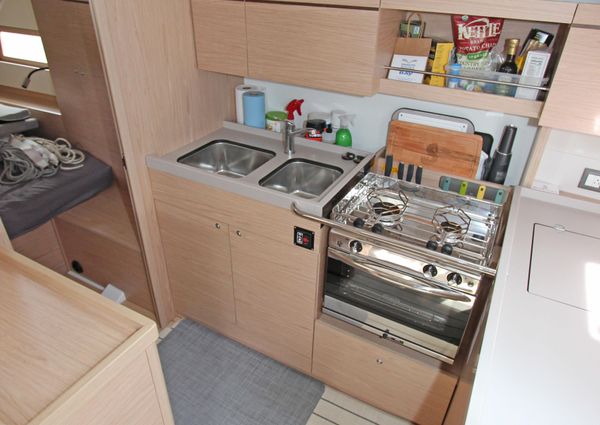 |
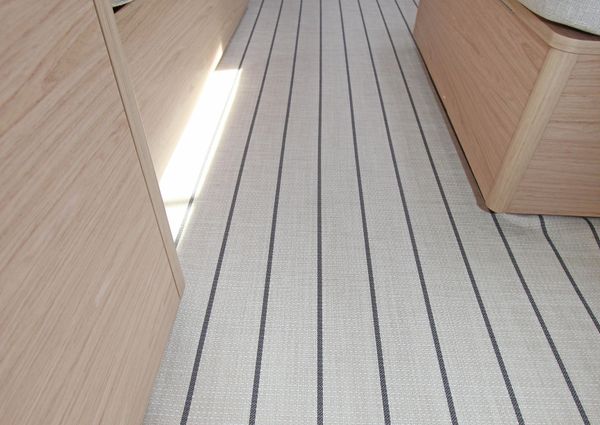 |
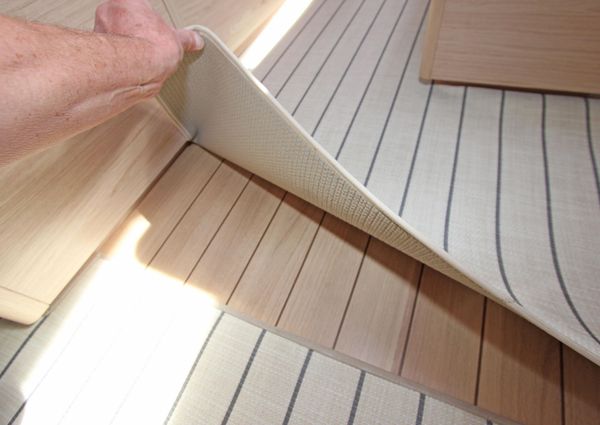 |
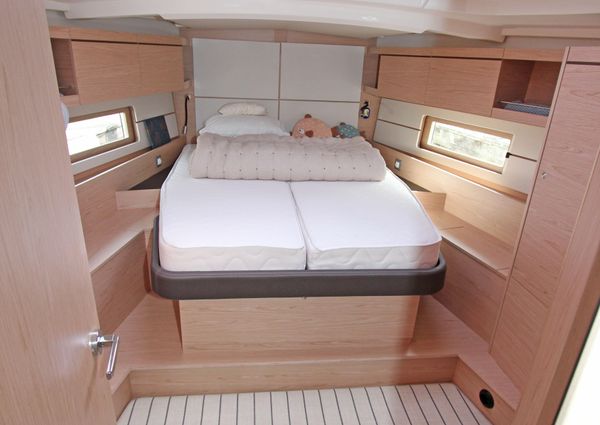 |
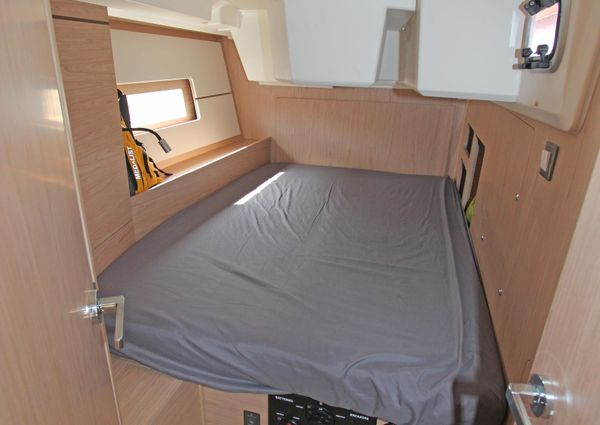 |
 |
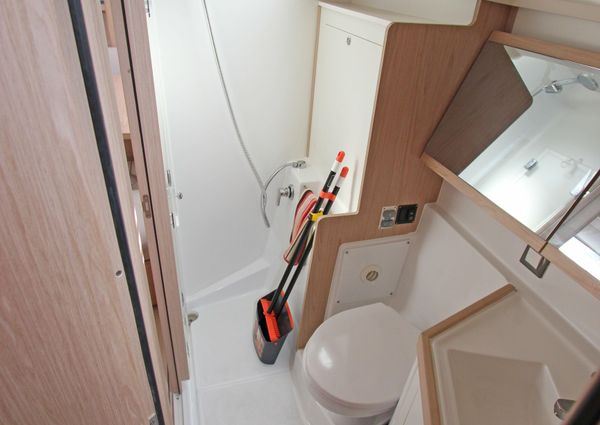 |
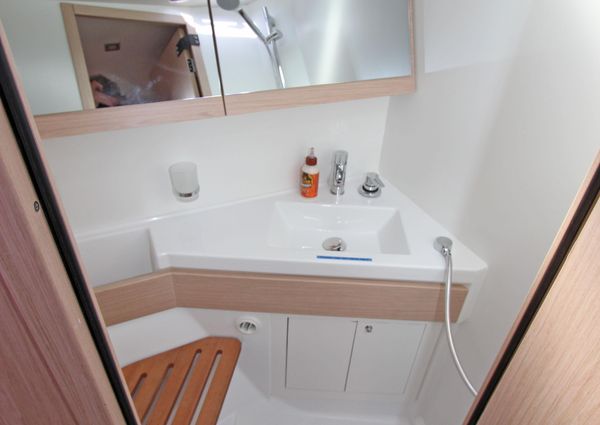 |
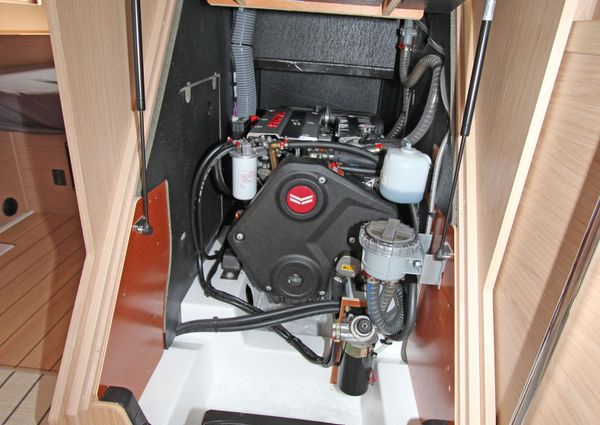 |
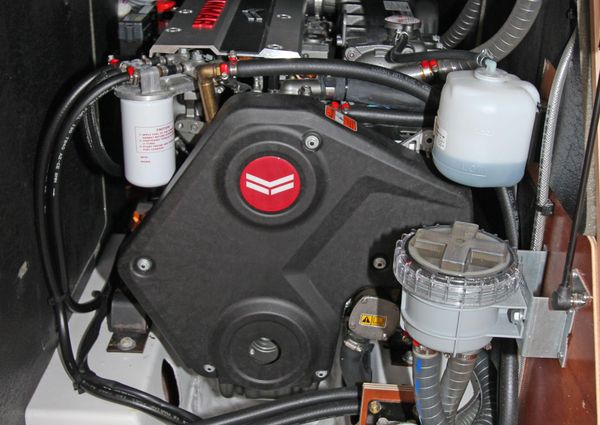 |
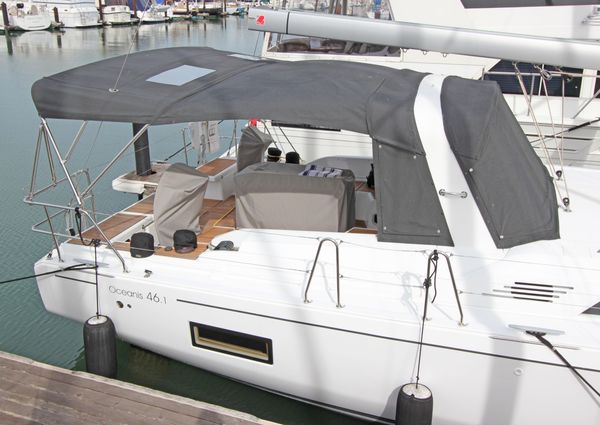 |
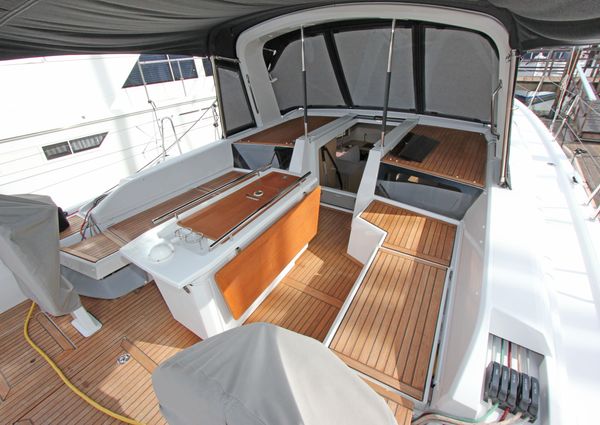 |
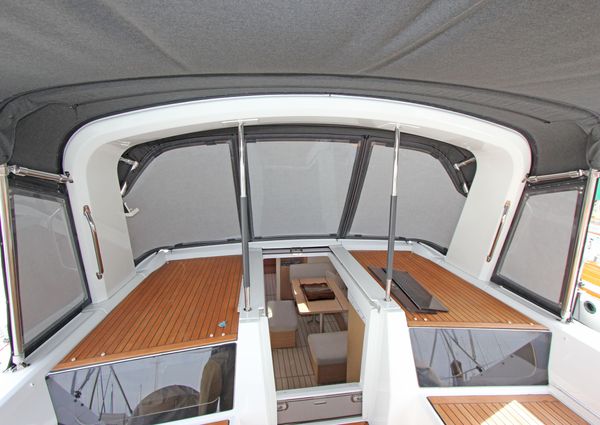 |
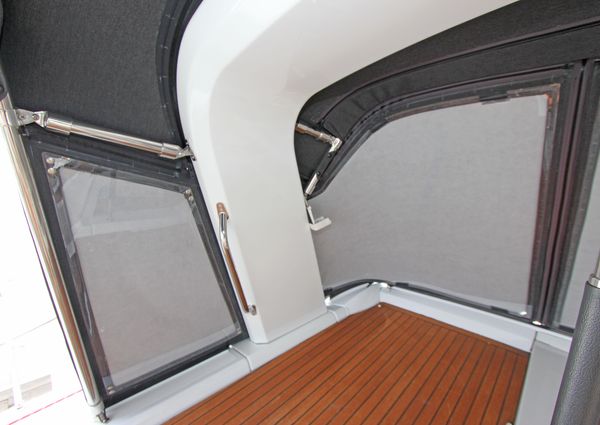 |
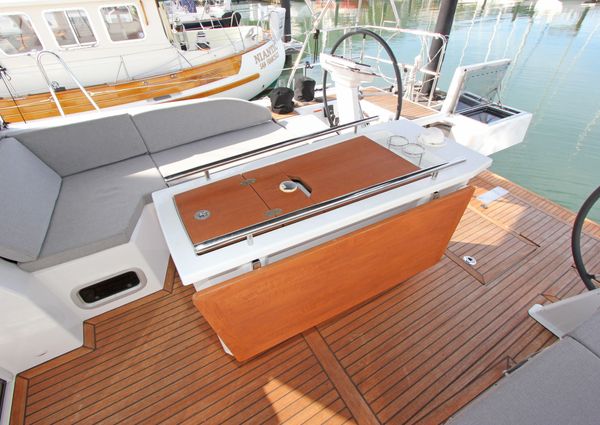 |
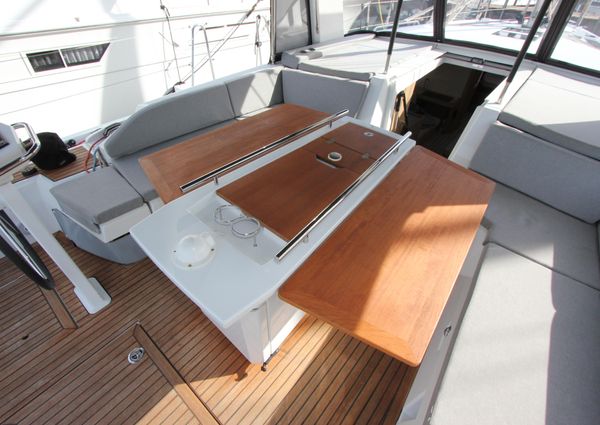 |
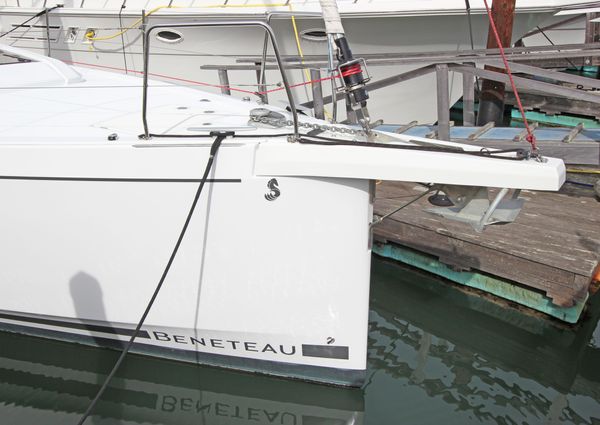 |
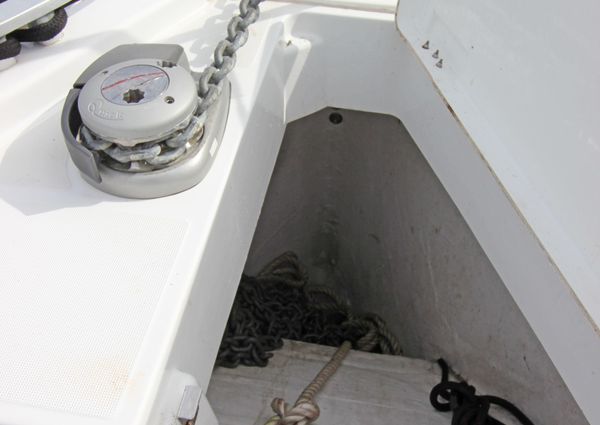 |
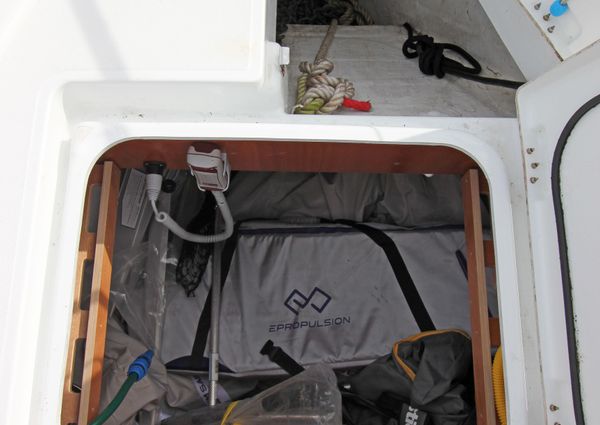 |
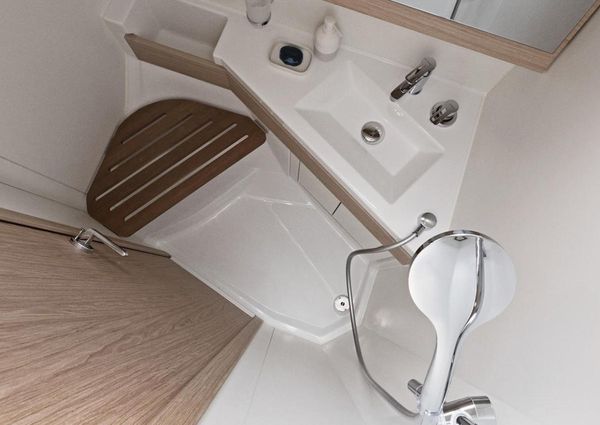 |
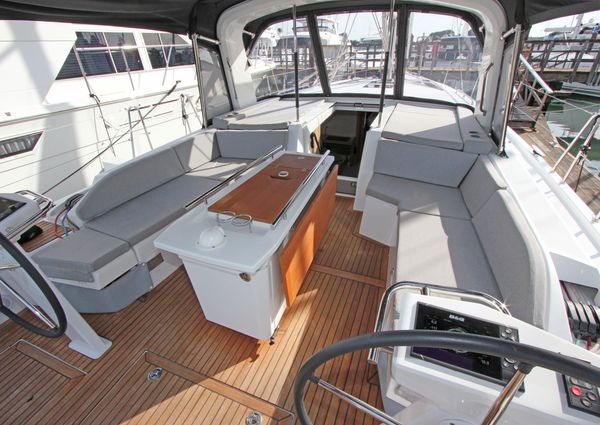 |
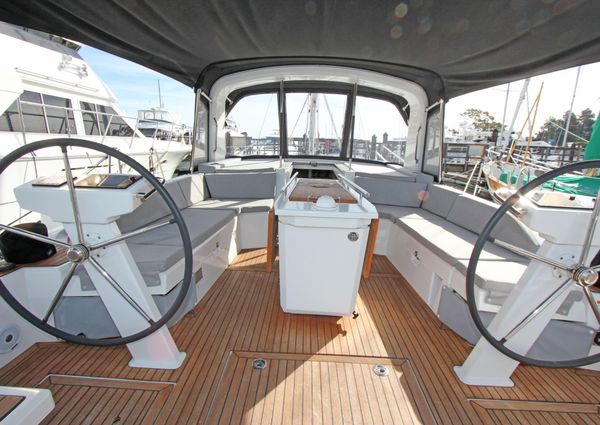 |
 |
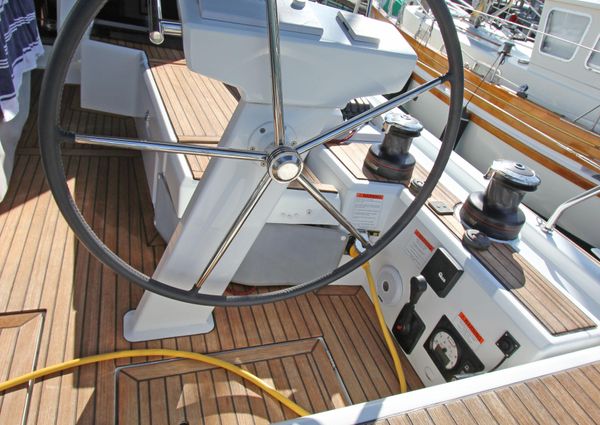 |
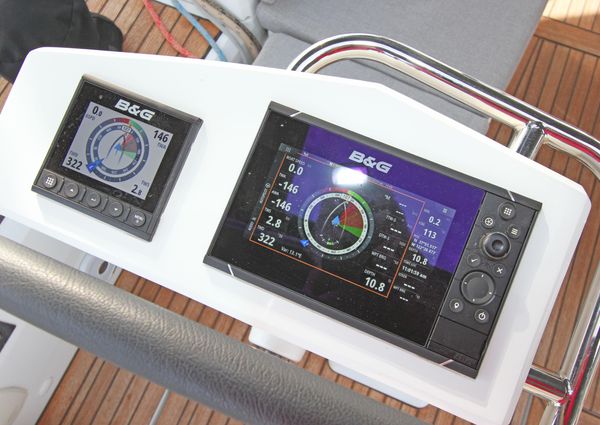 |
 |
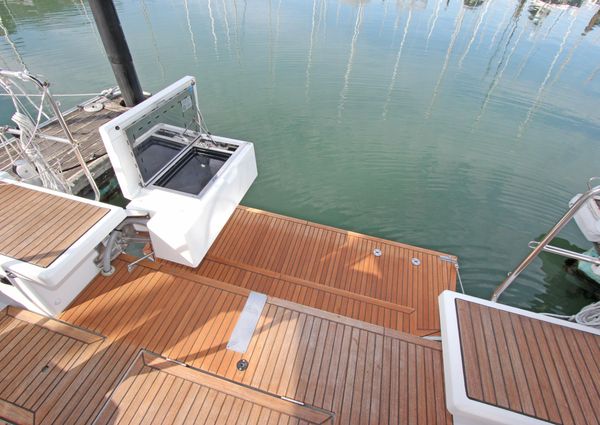 |
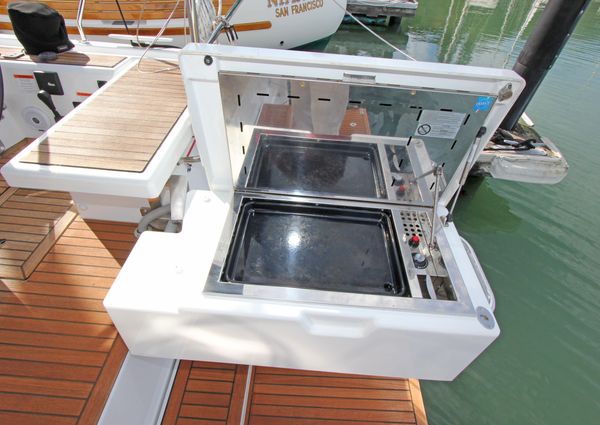 |
 |
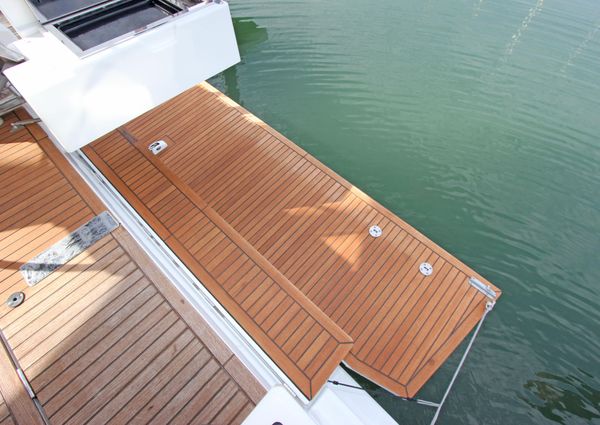 |
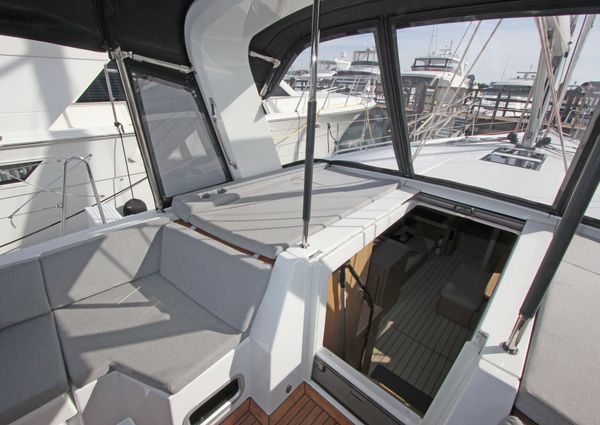 |
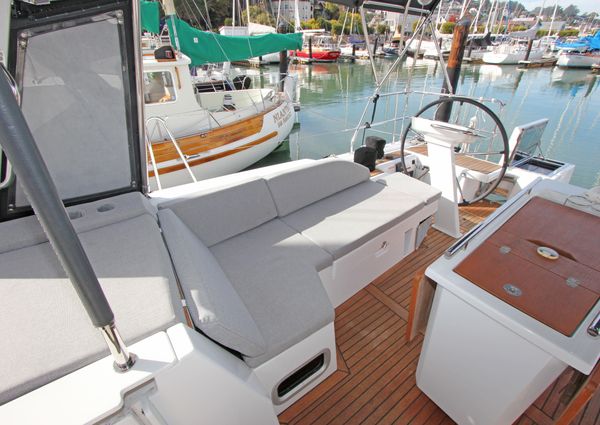 |
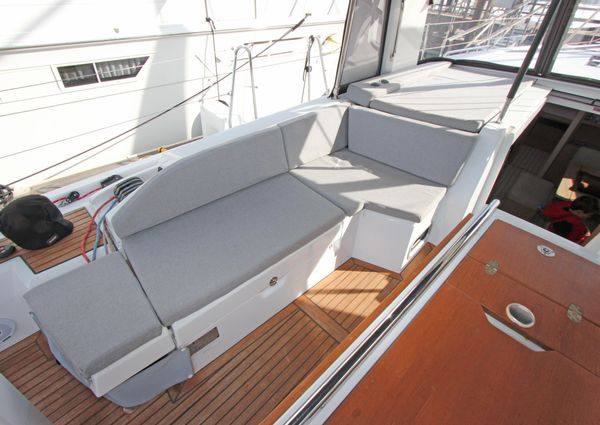 |
Master stateroom forward with island double, private head, plenty of storage and plenty of light. Step aft into salon with short settee and nav table port side, C shaped settee with dinette across to starboard with inboard bench seating.
Continue aft to L shaped galley port side with guest stateroom far aft. Centerline companionway up to cockpit then head with stall shower starboard with second guest stateroom far aft with private access to head.
Note the interior, done in bleached Alpi Oak wood and light fabrics, is bright and airy with over 6' 6 headroom throughout most of the boat (and even in the two guest staterooms have 6' 4) and shows as new (with the custom floor coverings better than new actually!).
L-shaped galley with laminate countertops with Corian fiddles, hot/cold pressure water with designer one-touch faucet and twin polished stainless steel rectangle sinks, Eno polished stainless steel two burner propane gimballed stove with handrail, top opening icebox with 12V Vitrifigo freezer unit, Vitrifigo front opening 12V refrigerator/freezer.
Cockpit table has 12V chiller section, built in swing-out propane BBQ at transom.
Two heads, both with separate stall showers and both with Jabsco Quiet Flush electric toilets.
110V AC / 12V DC. Thirty amp shorepower service, charger/inverter, three AGM batteries in two banks with parallel switch.
All B&G electronics including radar, GPS chartplotter, autopilot wind speed/direction and depth/knots with 7" Zeus multifunction display units at both helms, B&G VHF below at nav table.
Fusion multi purpose entertainment system with speakers below and in cockpit.
US Spars deck stepped aluminum mast with compression post and double spreaders, US Spars aluminum boom with rigid vang and German system two-way mainsheet, dacron in-mast furling main, North Sails genoa on Facnor roller furler, all lines lead aft through 11 rope clutches. Two Harken #50 two speed electric winches, two Harken #46 two speed electric winches, running rigging has all been replaced because the owner wasn't impressed with the quality of the original lines.
Elvstrom furling Code-0 downwind sail--very nice with carbon fiber furler etc., NEVER USED.
Monolithic polyester FRP hull with cast iron keel affixed with stainless steel bolts and backing plates, cored decks with molded-in non skid diamond pattern, twin rudders with stainless steel stock. Custom dodger with polycarbonate windows, custom bimini and connector (beautifully designed and executed!), full set of cockpit cushions.
Stainless steel stanchions with double life lines, stainless steel bow pulpit with single anchor roller, fully opening transom which electrically folds down to become a big swim platform (8’ 8 x 2’ 7) with teak decking and stainless steel swim ladder, retractable dingy davits.
Quick electric windlass with chain counter, Rocna anchor on bow roller with ample rode, six aluminum mooring cleats.
Zodiac Cadet 270 Aero (2020, this cost almost $2,000 and was used ONCE) with a 3 hp e-Propulsion Spirit short shaft electric motor that's NEVER been used ($2,200, this motor has a rechargeable removable battery that FLOATS, pretty cool!).
Optional 80 hp Yanmar fresh water cooled Common Rail diesel engine (note 57 hp is standard so this is a material upgrade) in soundproofed engine compartment with excellent access. Less than 100 hours on the engine, which shows as new.
The Beneteau sailboat line has long represented a kind of continuum, both in terms of the many models the company is offering at any given moment and over time. This does not, however, in any way diminish the quality of its individual boats. Just the opposite. Case in point: the Beneteau Oceanis 46.1, a performance-cruiser that not only makes lots of sense but is a joy to sail.
The Oceanis 46.1 is vintage Beneteau in terms of basic construction. The hull is molded in polyester, while the deck is comprised of an injected fiberglass/foam-core sandwich, with a molded-in anti-skid; the deck-stepped, double-spreader mast is aluminum; and both the shoal and standard-draft keels are cast iron. The “basics” of this boat, however, represent only the tip of the iceberg in terms of all this boat has to offer.
Like its predecessor, the Oceanis 51.1, the Beneteau Oceanis 46.1 boasts twin rudders, a prerequisite aboard a modern cruising boat that carries its beam well aft. Also like the 51.1, the Pascal Conq-designed 46.1 features a “stepped” hull, in which the canoe body flares dramatically to a chine immediately above the waterline, thereby allowing Beneteau to maximize interior volume while maintaining a narrow entry forward.
Also forward is a substantial fixed sprit for flying a Code 0 or asymmetric spinnaker, and keeping the hook away from the boat’s plumb stem. Finally, a turbo-charged First version of the boat is available, which includes an extra 3ft of mast, 28 percent more working sail area, Harken Performa winches and a deep, lead-bulb T-keel for better righting moment.
The overall look is both purposeful and very Euro. However, to my eye, there’s also something vaguely reminiscent of the old C&C line in the boat’s cabintrunk profile forward—and that’s a good thing. The standard rig includes an in-mast furling main, but a conventional main is also available. A track for a self-tacking jib is located just forward of the mast. Genoa tracks are also located close inboard alongside the cabintrunk.
The deck combines a nice mix of comfort and practicality. Aft, the boat’s substantial beam provides room for a fantastic cockpit, complete with twin wheels and twin benches that are both plenty long and (equally important) well-proportioned for lounging.
Group Beneteau long ago elevated drop-down swim step design to high art, and the motorized, articulated platform on the 46.1 is no exception. Not only does it include a considerate extra step, it also serves as a nice platform for tending a swing-out grill concealed in the starboard helm seat. A pair of lounging pads to either side of the companionway completes the cockpit’s “comfort” package, so to speak.
As for the practical side of things, when retracted the swim step forms a nice backstop for preventing errant children and tools from going overboard aft. There are also a pair of retractable davits for lifting the dinghy out of the way on passage; and the optional mainsheet arch, in addition to anchoring the dodger incorporates a pair of fantastic handholds to either side of the companionway as well as handholds outboard for moving around in the breezy conditions.
Similarly, the twin helm stations, not only to provide a clear vantage point forward and of the rig, but are within reach of all the necessary winches and stoppers for trimming sail. In fact, all the winches are located here, i.e., there are none forward of the companionway, thereby freeing up the necessary space for the aforementioned lounging areas. I especially like the more minimal binnacle style Beneteau is going with these days, and the sizeable cockpit table includes sufficient storage space for a liferaft. A pair of sturdy handrails toward the center of the cockpit table are a nice touch.
Forward, a molded-in toerail provides additional security, and while the uppers terminate outboard the lowers are secured just outboard of the cabintrunk providing a clear pathway to the bow. Once there, you’ll find a wonderful belowdecks sail locker just aft of the anchor locker, complete with ladder—exactly as it should be for digging out those reaching sails.
Accommodations are another area in which Beneteau excels and has scads of experience, and the basic layout of the Oceanis 46.1, though a fairly conventional one, is very well executed.
The owner’s stateroom is forward and voluminous enough (thanks in part to that stepped hull) for an island bed, separate head and shower compartments, and his and hers hanging lockers.
Saloon options include an L-shaped galley to port of the companionway or an in-line galley to port in place of a settee. The latter becomes necessary if you want to have a separate shower/head for each quarterberth. In fact, Beneteau offers the option of as many as five separate cabins and four heads, although such extravagance will likely only appeal to charter companies. The L-shaped galley includes a top-opening and front-opening fridge, and a compartment at the base of the companionway gives you something to lean up against while cooking.
There is a choice of satin “light oak” or mahogany in the joinery work. Whatever material you choose, the combination of hull windows, ports and overhead hatches will ensure there is plenty of natural light belowdecks when the sun is up.
The day of our test sail we had a steady 10 knots of breeze on Narragansett Bay, which made for effortless sailing, whether hard on the wind or reaching along under a Code 0.
It’s easy to forget in this day and age that a 47-footer displacing over 23,000lb—lightship no less—is a big boat. Yet you hardly ever really notice it aboard the Oceanis 46.1, thanks to the boat’s well-thought-out hardware, which on our test boat included Harken 50 electric primaries, Harken 46 electric secondaries, Spinlock stoppers, a Profurl genoa furler and a Facnor continuous-line furler for a light-air Code 0. (Nav electronics were all B&G with an MFD at each helm.)
Also aboard our test boat, we carried a North Sails 3Di Nordac cruising headsail and a standard in-mast furling main. Despite the limitations of the latter, we managed an impressive 4.5 knots on a close reach, even as the true windspeed feel away to a bare 6.2 knots. Bearing away, we unfurled the Code 0 at the same time the wind picked up a bit and were soon going just over 8 knots with 11 knots of wind.
My experience has been that the boats in the Oceanis line are also more than up to the rigors of passagemaking, and I’d love to see how this boat does off-soundings. Then again, vast majority of times most owners will be taking the boat out in conditions much like those we experienced during our test sail, and for that the boat was absolutely perfect.
Time was, backing up a sailboat could be an adventure, but not anymore, thanks to today’s rudders, and especially when you have a bow thruster at your disposal—as was the case threading our way in and out of the packed marina at Fort Adams. Under power with the standard engine swinging an optional Flexofold folding prop, we did 3.3 knots motoring into a slight headwind at 1,000 rpm. Throttling up to 2,200 rpm yielded a very acceptable 6.9 knots.
Beneteau has been in the business for a long time, and you pretty much know what to expect from one of the world’s biggest boatbuilders. This, however, in no way diminishes the fact that the company continues to produce outstanding boats, including this very nice new performance-cruiser.
Adam Cort, Sail Magazine, May 15, 2019
The Company offers the details of this vessel in good faith but cannot guarantee or warrant the accuracy of this information nor warrant the condition of the vessel. A buyer should instruct his agents, or his surveyors, to investigate such details as the buyer desires validated. This vessel is offered subject to prior sale, price change, or withdrawal without notice.